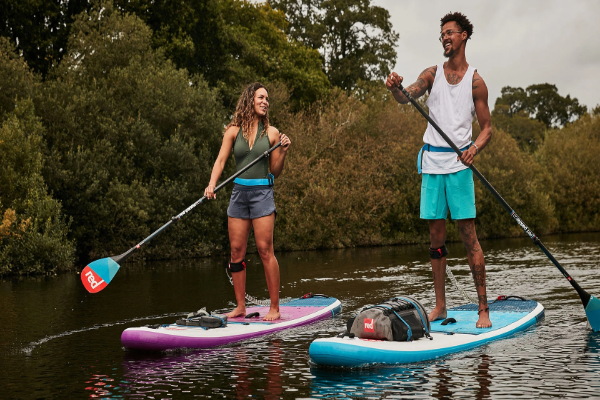Paddle boarding is a fun and rewarding activity that can be enjoyed by people of all ages. Inflatable paddle boards, in particular, offer a convenient and portable option for those looking to take their paddle boarding adventures on the go. Learning how to get on an inflatable paddle board is the first step to enjoying this exciting water sport. In this article, we’ll cover everything you need to know to get started.
Understanding Your Inflatable Paddle Board
Before you get on your inflatable paddle board, it’s important to understand its parts and how it works. Inflatable paddle boards are designed for stability and ease of use. Here are the main components:
- Board: The main part of the paddle board that you stand on.
- Fin: Located at the bottom of the board, the fin helps with stability and steering.
- Leash: A safety strap that attaches to your ankle and the board to prevent it from drifting away if you fall off.
- Paddle: Used to propel yourself through the water.
- Pump: Used to inflate your paddle board before use.
Choosing the Right Location
Selecting the right location is crucial for a successful paddle boarding experience. Beginners should look for calm, shallow waters with minimal boat traffic. Lakes, ponds, and calm bays are ideal locations. Avoid areas with strong currents, waves, or busy boating activity until you become more experienced.
Preparing Your Paddle Board
- Inflate the Board: Use the pump to inflate your paddle board. Follow the manufacturer’s instructions to ensure the board is properly inflated.
- Attach the Fin: Most inflatable paddle boards have a detachable fin. Secure the fin to the bottom of the board.
- Attach the Leash: Fasten the leash to the designated point on the board and to your ankle.
See Also: How to Get Better at Paddle Boarding
Getting on the Paddle Board
- Wade into the Water: Carry your paddle board and paddle into the water until it is about knee-deep.
- Position the Board: Place the board in the water with the fin facing downward. Hold the board steady with one hand.
- Kneel on the Board: Start by kneeling on the board, one knee at a time. This will help you get used to the board’s stability.
- Position the Paddle: Hold the paddle across the board in front of you for balance.
- Stand Up Slowly: Once you feel stable, place one foot flat on the board, followed by the other. Slowly stand up, keeping your knees slightly bent to maintain balance.
Balancing on the Paddle Board
- Center Yourself: Stand in the middle of the board with your feet shoulder-width apart.
- Keep Your Knees Bent: Slightly bend your knees to absorb any movement from the water.
- Look Ahead: Focus on a point on the horizon to help maintain your balance.
- Use Your Paddle: Use the paddle to help stabilize yourself. Place it in the water and use it to counterbalance any wobbles.
Paddling Techniques
- Basic Stroke: Hold the paddle with one hand on the top handle and the other hand on the shaft. Reach forward with the paddle, submerge the blade, and pull it back toward your feet.
- Turning: To turn, paddle on one side of the board. To turn left, paddle on the right side. To turn right, paddle on the left side.
- Stopping: To stop, paddle backwards on both sides of the board.
Falling Off and Getting Back On
- Falling Off: If you lose your balance and fall, try to fall away from the board to avoid injury. The leash will keep the board close to you.
- Getting Back On: Position yourself alongside the board. Grab the handle in the center of the board and kick your legs to pull yourself up. Slide your chest onto the board, then swing your legs up and return to a kneeling position before standing up again.
Safety Tips
- Wear a Life Jacket: Always wear a life jacket or personal flotation device (PFD) for safety.
- Check the Weather: Avoid paddle boarding in bad weather conditions, such as strong winds or storms.
- Stay Hydrated: Bring water with you and stay hydrated, especially on hot days.
- Use Sunscreen: Protect your skin from the sun with sunscreen, sunglasses, and a hat.
Advanced Techniques and Tips
- Surfing Waves: Once you’re comfortable, try riding small waves to improve your skills.
- Yoga on the Board: Paddle board yoga is a great way to challenge your balance and strength.
- Paddle Boarding with Pets: If you have a pet, you can bring them along for the ride. Make sure they have a life jacket too.
Conclusion
Getting on an inflatable paddle board may seem challenging at first, but with practice, you’ll gain confidence and enjoy the many benefits of this exciting water sport. Remember to take it slow, focus on your balance, and always prioritize safety. Happy paddling!

